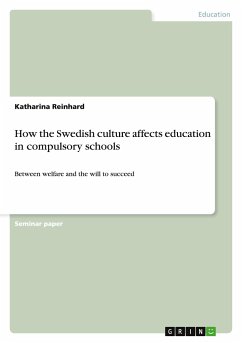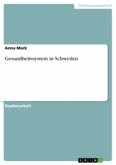Seminar paper from the year 2014 in the subject Pedagogy - Intercultural Pedagogy, grade: 2,0, EBC University Hamburg, language: English, abstract: This paper will examine the values and beliefs of the Swedish culture revealed by analysing the characteristics of a linear-active culture, which is described in Lewis' Model of Culture. Therefore, the focus will be on the theme of comprehensive schools in Sweden.Culture should be regarded as an iceberg, where 80% is hidden from your view. You can find these hidden 80% in history, ecology, table manners, social etiquette or social structure of a different culture. One field, in which many of these hidden cultural aspects can be found, is the school system. It is one of the main parts of socializing and education of a country and so it shares the cultural norms nearly every day. One good example is the primary school in Sweden, because it is very different from other European schools and reflects the Swedish culture in many points. Inorder to show the hidden 80% of the Swedish culture, this elaboration will focus on Sweden's comprehensive school. Therefore, this paper will first concentrate on cross-cultural communication. After explaining, what cross-cultural communication means, it will give a short insight into the Cultural Model of the British author and polyglot Richard D. Lewis, who classified cultures into three categories. After classifying the Swedish culture, this this paper will analyse its values, based on three characteristics Lewis assigned to linear-active cultures. These three characteristics can be found in nearly every part of the Swedish culture, but especially in the typical Swedish educational system. As already mentioned above, the Swedish school system is in many points different from other countries. To earn high quality standards, Swedish schools focus for example on the students and not only on teaching and learning contents. But there are many other hidden aspects that give some indication of the Swedish culture. In the last part of this paper, these aspects will be described and discussed.
Hinweis: Dieser Artikel kann nur an eine deutsche Lieferadresse ausgeliefert werden.
Hinweis: Dieser Artikel kann nur an eine deutsche Lieferadresse ausgeliefert werden.








